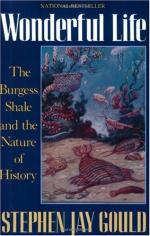
|
| Name: _________________________ | Period: ___________________ |
This quiz consists of 5 multiple choice and 5 short answer questions through Remainder of Chapter 3.
Multiple Choice Questions
1. What are Derek Briggs and Simon Conway Morris described as?
(a) Anxious.
(b) Brilliant.
(c) Apathetic.
(d) Nervous.
2. What happened from 1971 through 1978 that changed everything?
(a) Years of scientific debate.
(b) Two months of pondering.
(c) Sporadic leaps in clarity.
(d) Gradually.
3. What large crab with an enormous number of spines did Collins publish a monograph on in 1985?
(a) Malactaris.
(b) Sanctacaris.
(c) Phylocaticis.
(d) Eskesis.
4. Which old category did the team focus on to classify Opabinia?
(a) "Trilobites."
(b) "Worms."
(c) "Mechanisms."
(d) "Beetles."
5. What does Gould's new interpretation emphasize about human evolution?
(a) It has no single order.
(b) It has two orders.
(c) It has a single order.
(d) It has five orders.
Short Answer Questions
1. How many general stages of fauna are between the two faunas both eukaryotic and of the Burgess Shale?
2. Of Whittington's team, who was more methodologically conservative?
3. What make up periods?
4. What did Whittington restrain Morris from doing?
5. Who was America's "greatest paleontologist and scientific administrator"?
|
This section contains 184 words (approx. 1 page at 300 words per page) |

|




